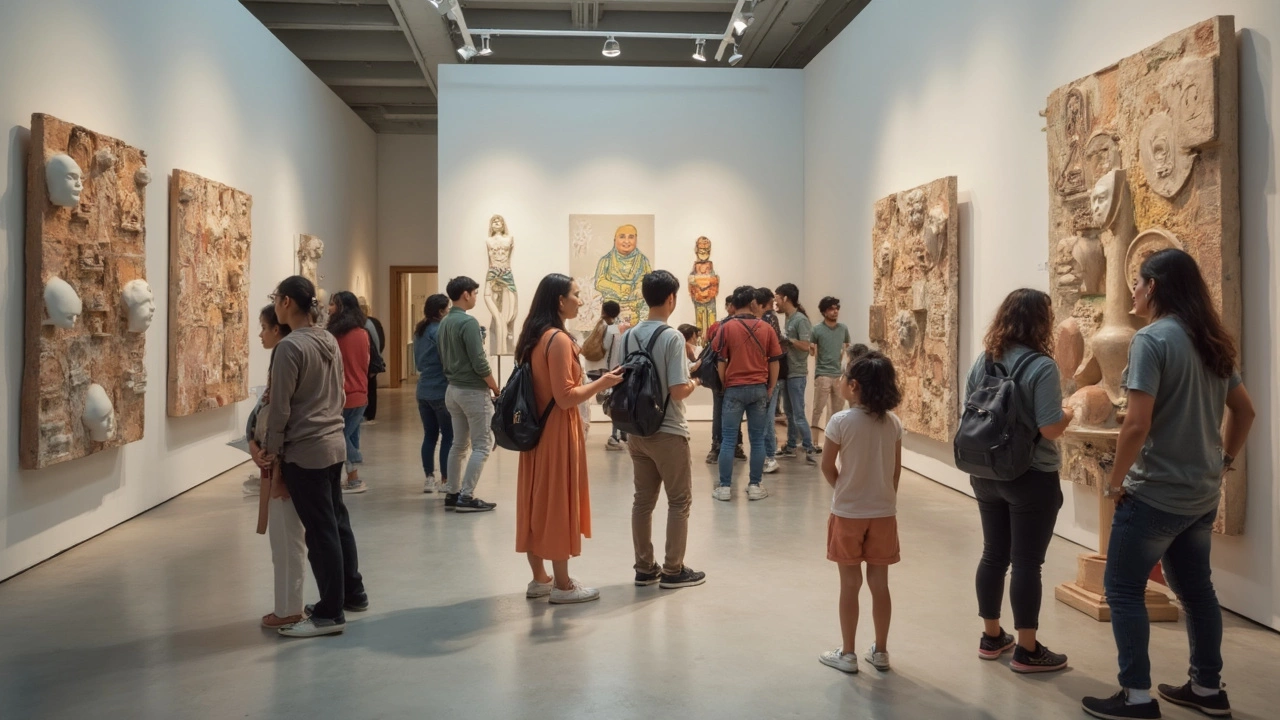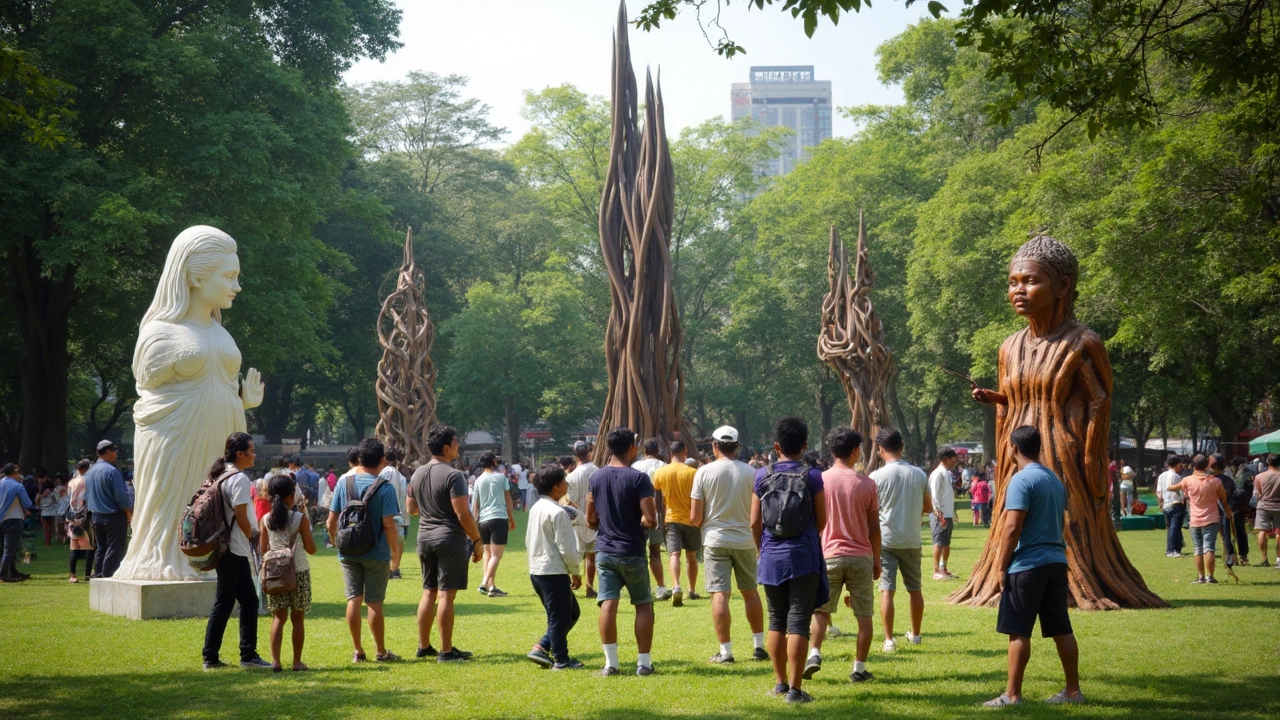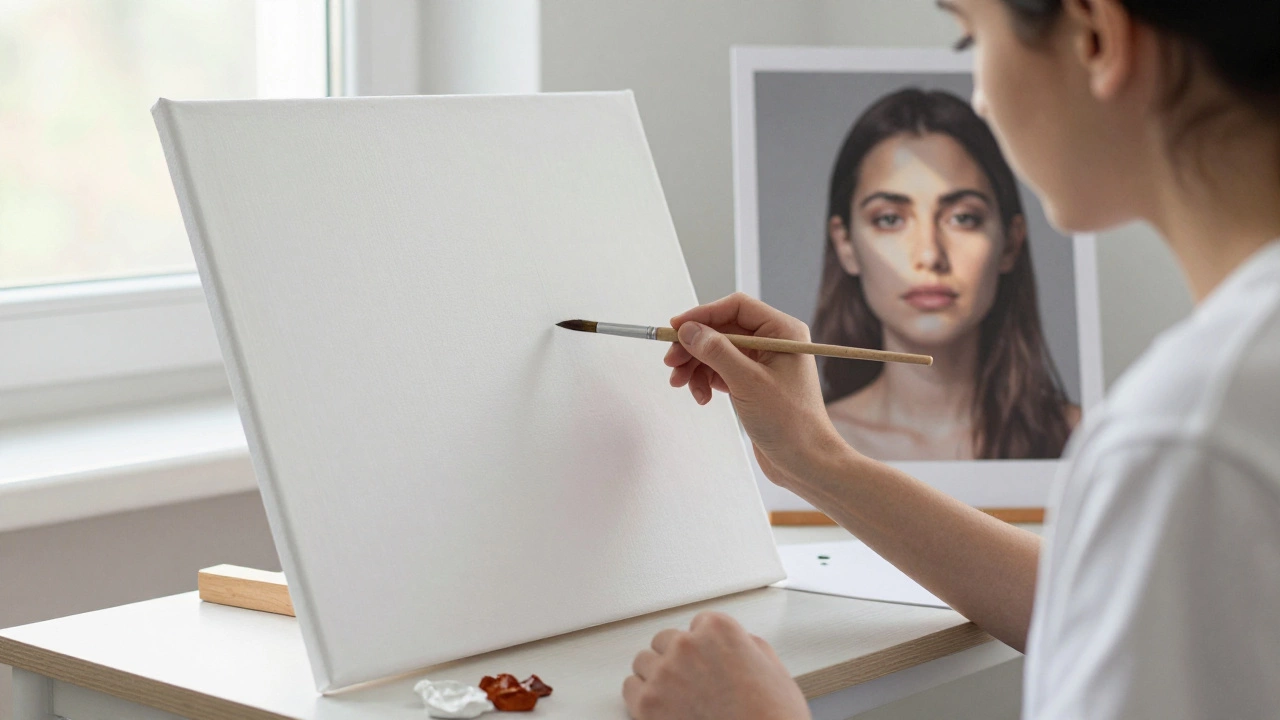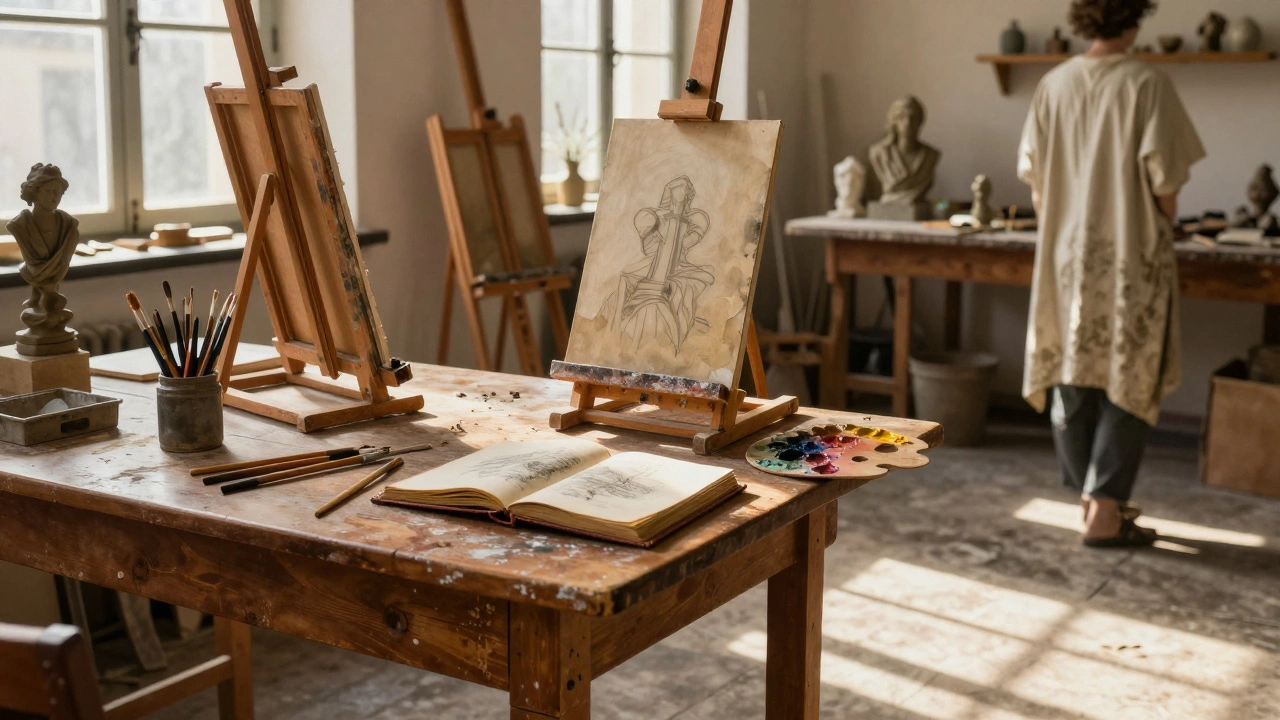Walk through any city or museum and you’re bound to run into a sculpture – but what exactly makes something a sculpture, and what style is it? It’s not just about statues of heroes or old kings gathering pigeons. Sculpture is about shaping space in three dimensions, and the styles can range from smooth and realistic to wild and unrecognizable.
If you’ve ever wondered why some sculptures look lifelike while others are strange stacks of metal, it all comes down to style. Each style reflects the time, the culture, and even the artist’s mood. There’s no single right answer, and that’s what makes sculpture so fun to explore.
Understanding sculpture styles isn’t just for art majors or critics. If you know a few basics, you’ll find museum visits (and even city strolls) a whole lot more interesting. Ready to get more from the next sculpture you see? Let’s untangle what style really means in the world of sculpture.
- How Do We Define Sculpture?
- Classical to Contemporary: Main Sculpture Styles
- Materials and Techniques That Change the Look
- Abstract, Figurative, and Everything Between
- Public Art, Installations, and Everyday Encounters
- Spotting Sculpture Styles: Tips for Art Lovers
How Do We Define Sculpture?
Alright, let’s cut through the confusion: what turns an object into a sculpture? It’s simple—sculpture is art that takes up real space you can walk around or touch (if the museum staff isn’t looking). Artists use materials like stone, wood, metal, or even plastic to build something you see from more than one side.
The big deal with sculpture is that it’s three-dimensional. You’re not just looking at a picture on the wall. The shapes exist in real life, throwing actual shadows, and interacting with the world around them. Whether it’s tiny enough to hold in your hand or bigger than your house, that physical presence is what makes it stand apart from flat art.
Most sculptures are made by two main methods:
- Sculpture by carving—chipping or cutting away material, like a marble statue.
- Sculpture by modeling or assembling—building up, connecting, or shaping materials, like a clay bust or a welded metal figure.
Here’s a quick table to show what usually counts as sculpture and what doesn’t:
| Art Type | 3D or 2D? | Usually Sculpture? |
|---|---|---|
| Stone statue | 3D | Yes |
| Oil painting | 2D | No |
| Metal installation | 3D | Yes |
| Pencil sketch | 2D | No |
| Ceramic pot | 3D | Sometimes* |
*Fun fact: Some pots, jewelry, or furniture get called sculpture if they’re designed more for looks or artistic meaning than daily use. So, lines do blur sometimes!
When in doubt, ask yourself: Can I see this from different angles in real space? If yes, you’re probably looking at a sculpture. It’s all about how it lives in the physical world, not just in your imagination or on a screen.
Classical to Contemporary: Main Sculpture Styles
If you look at the whole history of sculpture, there’s a huge mix of styles, and each has its own vibe. The oldest styles, like ancient Greek and Roman sculpture, went for realistic bodies and calm faces. Think polished marble athletes or Roman emperors looking serious. These classical styles set the tone – they wanted art to show perfection and balance.
Things shifted during the Middle Ages, when religious statues filled cathedrals. Instead of just copying real life, artists made figures that told stories from the Bible. These sculptures might look a bit stiff since their main job was spiritual, not showing off the human body.
Then came the Renaissance, and artists like Michelangelo pushed sculpture back toward realism, but with even more drama. Suddenly, muscles popped, faces showed emotion, and figures twisted into dynamic poses. This style was all about showing skill and energy.
Fast forward to the 1800s and 1900s—here’s where things get really wild. Artists started breaking away from copying real life. Think Auguste Rodin’s “The Thinker”—it’s emotional and raw, not just a pretty statue. This opened the gate for modern and contemporary styles, where anything goes. Materials shifted too: wood, metal, found objects, even trash. Suddenly, a pile of old tires or a twisted sheet of steel could be a sculpture if the artist said so.
Now, you’ll see everything from sleek, geometric shapes (like works by Donald Judd) to crazy public art that you can walk through or around. Contemporary sculpture isn’t just about what you see—it’s about how you feel and interact with it.
- Classical: Realistic, balanced, and calm (Ancient Greece and Rome)
- Medieval: Focus on religion, symbols, and storytelling
- Renaissance: Realistic but more emotional and dramatic
- Modern: Breaks from tradition, shows new ideas and raw emotion
- Contemporary: Mixes materials, invites interaction, often challenges what “art” even means
So next time you see a sculpture, take a closer look. Is it smooth and lifelike, or weird and abstract? Each style tells a story about the artist, the times, and even the stuff they used to make it.
Materials and Techniques That Change the Look
Pick up any sculpture textbook and you’ll see that what artists use (and how they use it) totally changes the vibe of their work. Some materials make a sculpture look polished and permanent, while others give off raw or playful energy. Here’s a breakdown of what people have used—and still use—when making sculpture.
Stone, especially marble and granite, has a huge history. Ancient Greek and Roman artists carved lifelike bodies out of marble, which is strong enough for fine details. Bronze is another old favorite, used in both classical and modern times because it’s sturdy and lets you cast shapes you can’t carve easily. Sculpture made from these materials often feels serious or important, maybe because of its weight and cost.
Wood is a classic too, but it’s a bit more chill. African, Asian, and Native American carvers all used it for ages. Wood sculptures can look warm and friendly because of their grain and color. The catch: wood doesn’t always last forever if you leave it outside.
Now let’s talk modern. Artists today use just about anything—plastic, glass, foam, sometimes even junk or recycled stuff. This shift exploded in the 1900s when art materials got cheap, and no one raised an eyebrow at sculptures made of tires or empty bottles. Techniques changed, too, with welding, laser-cutting, and even 3D printing joining the classic hammer and chisel. This makes modern sculptures look way different from the marble statues you see in history books.
“If you look at contemporary sculpture, you’ll notice there are no limits. Artists build, carve, assemble, and even stretch the definition of what can be called a sculpture.” — Smithsonian American Art Museum
Here’s a quick cheat sheet of common materials and how they show up in sculpture:
- Marble: Think Michelangelo’s David or Greek gods—classic and detailed.
- Bronze: Great for busts, monuments, and anything that needs to stand tall outside.
- Wood: Used in smaller works or cultures near forests, often finished smooth or left a bit rough.
- Steel: Modern city sculptures, bold lines, and big shapes (like the Chicago Bean).
- Mixed media or found objects: Anything from shoes to car parts put together—makes for quirky or bold art.
Artists pick materials for all sorts of reasons: maybe for strength, maybe for cost, or maybe to make a statement. In a 2022 survey by the International Sculpture Center, over 60% of living sculptors said they experiment with at least three different materials each year.
| Material | Famous Example | Typical Use |
|---|---|---|
| Marble | Michelangelo’s David | Statues, detailed works |
| Bronze | The Thinker by Rodin | Monuments, outdoor art |
| Wood | Masks from West Africa | Cultural, small to medium |
| Steel | Cloud Gate (The Bean) | Public sculptures, abstract |
| Found objects | Duchamp’s Bicycle Wheel | Modern, experimental |
So next time you see a sculpture, take a closer look at what it’s made of. Chances are, the material isn’t just about looks; it tells a story, too.

Abstract, Figurative, and Everything Between
When you walk up to a sculpture, first, ask yourself: does it look like a real person or object, or is it more about shapes, lines, or a feeling? That’s the main split in sculpture—figurative and abstract. Knowing the difference helps you make sense of what you’re looking at, and it also gives you the right language to talk about what you like (or totally don’t get!).
Figurative sculpture is all about representing something from the real world—usually people, animals, or recognizable objects. Think of Michelangelo’s "David" or the bronze lions in front of art museums. Back in the day, this was the main gig for sculptors, and you can spot these works by how they try to capture details, muscle, or expression. Even now, loads of artists go for this style because it connects quickly—almost anyone gets it without a guidebook.
On the other hand, abstract sculpture skips the lifelike stuff. Artists twist, stretch, and cut shapes just because they want to. Maybe it’s about how parts fit together, maybe it’s just about messing with your idea of what a sculpture even is! The famous "Bird in Space" by Brancusi is a good example—no feathers, no eyes, just the sense of something moving. Abstract styles took off big time in the 20th century, and sometimes people argue in front of these pieces for hours about what they "mean."
Of course, not everything fits neatly into those two buckets. You’ve got all sorts of works that blend the two. Some sculptures suggest the outline of a figure but leave out the details, or they might use objects in unexpected ways—this is called semi-abstract or stylized art. Then there’s surrealism, pop art, even graffiti-influenced sculptures. For example, Niki de Saint Phalle’s "Nanas" are wild, colorful figures that twist real and playful shapes together.
Here’s a quick cheat sheet for the big styles:
- Figurative: Looks real, shows people, animals, or objects you’d recognize.
- Abstract: All about form, line, and maybe emotion—no obvious real-world connection.
- Semi-abstract/Stylized: Somewhere in between, mixing real and made-up elements.
And just to show how much things have changed, take a look at this table. It compares when different sculpture styles became popular over time:
| Style | Main Era | Big Names |
|---|---|---|
| Figurative | Ancient to now | Michelangelo, Rodin |
| Abstract | Early 1900s and onward | Brancusi, Henry Moore |
| Semi-abstract | 1950s to now | Niki de Saint Phalle, Jean Arp |
So next time you come across a wild-looking piece or a perfect marble figure, you’ll know exactly what kind of art talk you’re stepping into. Want to sound pro? Tell someone why you think a piece lands closer to abstract or figurative—that’s where real conversations about sculpture start.
Public Art, Installations, and Everyday Encounters
Sculpture isn’t hiding out in fancy galleries. You’ll bump into it everywhere: subway platforms, city parks, office lobbies, and even shopping malls. Public art mixes sculpture with daily life, and it’s way more common than most folks notice.
Cities spend real money on public sculptures because they want to create identity, boost tourism, and just make things less boring. Chicago’s 'Cloud Gate' (aka “The Bean”) sees millions of visitors a year, while New York’s 'Charging Bull' is basically a social media hotspot. Here’s a quick look at a few jaw-dropping numbers:
| Artwork | Location | Annual Visitors |
|---|---|---|
| Cloud Gate (“The Bean”) | Chicago, USA | Over 10 million |
| Charging Bull | New York City, USA | Approx. 5 million |
| Angel of the North | Gateshead, UK | Over 150,000 mapped visits |
Public sculpture styles are all over the map: some are abstract, some are lifelike, and some are so odd you can’t decide if you’re supposed to touch them or just stare. You might find:
- Memorials and Monuments: These often stick to realistic styles. Think war memorials or statues of famous people.
- Contemporary Installations: These can be interactive, like Yayoi Kusama’s Infinity Mirror Rooms, or even use sound and light instead of stone or metal.
- Street Art Sculptures: Temporary or permanent, these grab attention fast—Banksy has even dipped into 3D pieces.
Many city sculptures are made to survive the wildest weather and the roughest handling, so you’ll see a lot of stainless steel, bronze, glass, or even recycled plastic. Some, like Olafur Eliasson’s waterfalls in New York (2008), only exist for a season, making them super rare and memorable.
Next time you’re outside, take a moment and look around. That quirky bench, giant metal arch, or odd pile of stones might just be a piece of public sculpture doing exactly what it’s supposed to: making you think or at least wonder what it’s doing there.
Spotting Sculpture Styles: Tips for Art Lovers
Getting good at spotting different sculpture styles isn’t just about memorizing names. It’s about slowing down and looking out for certain clues. You don’t need an art degree—just a bit of curiosity and a sharp eye.
- Material Choices: Pay attention to what the sculpture’s made of. Marble, bronze, and stone usually mean classical or traditional work, while plastic, glass, or junk often points to modern styles.
- Details or No Details? Realistic facial features, muscles, or clothing say it’s figurative, often linked to classical or realist styles. Abstract work skips the details for wild shapes or simple forms.
- Purpose and Setting: Is the sculpture in a square, a gallery, or a park? Monumental sculptures and public installations are more likely to be modern or contemporary. Statues with plaques and fancy bases are probably traditional.
- Movement and Lines: If a piece feels like it’s moving or twisting, or it’s full of sharp, weird angles, think modern or abstract. Classical work feels calm and balanced, while modern pieces might look off-center or random.
- Artist and Year: If you can find an artist’s name and date, look it up. Styles changed fast in the 20th century. Something from 1895 is probably worlds away from something made in 1960.
Here’s a quick cheat sheet for the most common sculpture art styles and what to watch for:
| Style | Main Features | Common Materials | Era or Example |
|---|---|---|---|
| Classical | Realistic, ideal bodies, draped clothing | Marble, bronze | Ancient Greece/Rome |
| Baroque | Dramatic poses, flowing movement | Marble, bronze | Bernini, 1600s |
| Modern | Abstract shapes, less detail | Steel, glass, found objects | Brâncuși, Picasso |
| Contemporary | Mix of everything, installations | Anything goes | Yayoi Kusama, Banksy |
If you’re stumped, take a picture or jot down a few words about what stands out—color, shape, setting, or the feeling it gives off. Later, you can search for the artist or similar pieces online. There’s no shame in guessing or changing your mind as you learn more. The more sculptures you see, the easier it gets to spot who made what, when, and why. Give it a try next time you’re out. You might be surprised at how much you can uncover.





